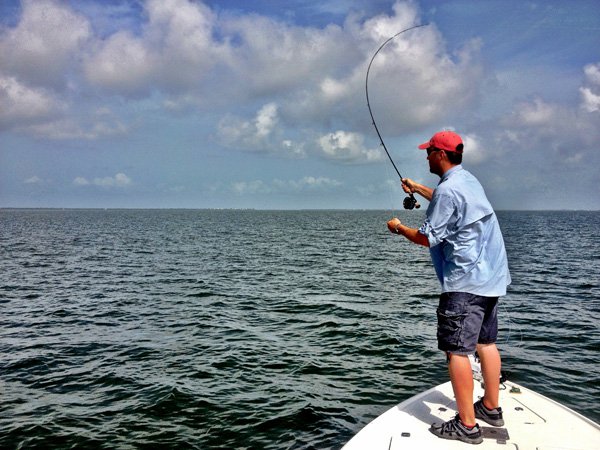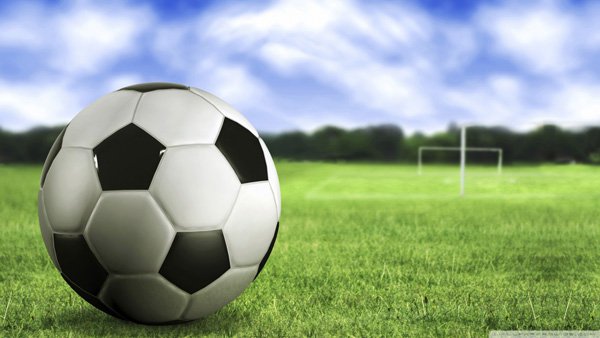how fast
Question
How can I improve my 40 time?
-------------------------------------------
The text above is a follow-up to ...
-----Question-----
What does your 40 yrd. dash time have to be to be a starting reciever in 1A College Football?
-----Answer-----
Matthew -
First off, thank you very much for the question. It brings up a "hot button" which is very controversial this day in age. So sit back, and let me give you a load of information, and let you decide what a good time would be. Keep in mind when reading the response, that 10 different experts will give you ten different opinions on this. OK, here we go.
For starters, I think it is important to get a brief history lesson regarding the coveted 40 yard dash. It is believed that in the 1960s, the Dallas Cowboys began testing all of there players at a 40 yard length. They felt it was the most accurate distance for a group of football players, all different positions. No one really knows why. Some say just because they think so, others say it is about the distance from the tailback to the free safety...who knows? But as you know all too well, it caught on and here we are today living and dying by what time we can post in the 40 yard dash.
Here is where your question gets a little troublesome. A receiver at any level, including Division 1 does not have a specific time he must run to make the team or starting unit. Coaches look at several different factors when deciding who will make the team / start. Of course, raw speed is one of them, and maybe the most important, but there must be more to it than that. Can that player run at that speed, then stop on a dime, cut, and finish a route? Can he remember the routes, audibles and play calls, can he CATCH THE BALL? Block for running plays? Break tackles? All of that goes into a coaches decisions with WRs.
Not withstanding the above information, I do understand why you asked the question you did. The 40 yard time has become the popular way of judging a receiver's potential threat level. I mean, after all, every announcer floods our head with each player's time in the 40 yard dash, and if no one can catch him, he must be dominant, right? Well, again, maybe. But only if he can catch the ball once he gets open. Just remember, not often do you see a football coach go to their school's track team and say "Everyone who runs a certain speed is automatically on the varsity football team, let's go". Right? The reasons listed above might explain that.
Now, more specifically, let's get to you. According to the masses, a good starting wide receiver will run somewhere in the range of 4.4 - 4.5 seconds / 40 yard dash. Some a little faster, some slower. But that is the preferred time for receivers at that level. Again, it is just a guide and not the absolute final say in 40 yard times.
Now keep a few other things in mind. Most experts have figured out that 40 yard times are extremely inaccurate. Times done by hand are usually about .2 seconds slow, meaning that if you are being timed by a hand-held stop watch, and run a 4.5, it is really a 4.7. Also, the type of surface, wind conditions, and shoes make a big difference in times. Also, looking at the fastest men in the history of the world gives us a very good understanding on how inaccurate football times are. When a particular sprinter broke the all time 100 meter record, using laser timing equipment, his 40 yard time was calculated at about a 4.3... Now that's the fastest guy EVER recorded! Do we honestly think there are a bunch of high school, college, and NFL players who could beat that? Don't think so!
Basically, the key for you is to find out which receivers you are interested in comparing to, learning their times and how they were timed, and then go use that same system and get yourself a times run. Use that run as your base and try to improve towards your goals. That of course is assuming your question was based on you wanting to play at the collegiate level. IF you were just curious, I guess the answer would be around a 4.4 - 4.5 40 time (loosely timed in most cases). But hey, who cares, they are fast regardless, no matter what the clock says. Just watch them run and I think you'd agree!
Please let me know if this response works for you. If there is anything else I can do for you, or if you would like to go further into this topic (how to increase your speed), do a follow-up and we can continue. Thank you again for writing and I wish you the best of luck in all you do. Let me know!
Coach Perl
Answer
Matthew -
OK.. Hopefully, my first response gave you an idea of what the coaches are looking for, and what you as a player would need to know going into any type of training to become a wide out at the college level. Now you are looking for some specifics to take advantage of that knowledge. GOOD! As a coach, your initiative is one of the things I would look for in a player, maybe as much as his 40 time! So obviously, you have the attitude for it, now let's get you the training tips as well!
Here are the main areas I want you to focus on to quickly begin dropping precious tenths of a second of your 40 yard dash:
1- Flexibility. Most athletes do not realize that the flexibility of their body is directly related to their ability to run faster, but it really makes total sense. Think about watching a really fast runner, football or other. Now get an image of their legs as they stride down the field past everyone else. Notice how powerful their strides are? Those strides are not possible without adequate flexibility in the legs and lower back. Increased flexibility not only increases your speed, but will drastically reduce the chance of injury. That's a big point as well! Trust me, college coaches WILL NOT want an injury prone athlete! IF they give out a scholarship to an athlete who is injury prone, and that player gets hurt, most schools will not pull his scholarship. In turn, the coach cant use him, so they lose a spot on their team to an injury that could be filled by a healthy athlete.
Because we are only able to communicate through writing on this site, it will be very hard to give you a stretching regiment, but I do have a way for you to get started. IF you are in a school system that has an athletic trainer, ask him to assign you a stretching routine to increase speed. Most if not all trainers are qualified to do this, and are usually more than willing to as well. IF this isn't a possibility for you, get on the net and look up stretching routines to increase speed. I am sure there are tons of them online. As an athlete, you will be able to pick out the ones that look credible. Hamstrings, quads, calves, lower back, and hips should all be in the one you choose. Another option, and a very good one at that is to buy a yoga DVD or book. Yoga will dramatically increase your flexibility in a short period of time, while also assist in your conditioning. I know its hard to believe, but it is very true!
I DO NOT KNOW YOUR AGE OR HEALTH LEVEL, SO BE SURE AND CHECK WITH YOUR DOCTOR BEFORE STARTING ANY WEIGHT LIFTING OR FITNESS PROGRAMS!!!
2- Leg strength. An obvious one here. The stronger you are, the harder your legs can push your body, so get in that weight room and work those legs. A scary trend in sports these days is the habit of athletes to neglect their lower bodies, and only work on the muscles in their upper bodies! You've seen it, the guys who have huge arms, pecs, and shoulders with chicken legs. These guys are usually worthless once you put the pads on them. All of that muscle does no good if you cant generate the force with your legs to make that strong upper body useful! "What do you bench?" Right? I am sure you have heard that one. I guess most think its more important to look good sitting the bench than look average as a starter. As far as a routine, most schools have programs for their players. If so, get in it right away. IF not, again, get online and look up a weight lifting routine for wide receivers. It should include
a good amount of power movements like presses, dead lifts, and hamstring curls (Assuming you are old enough for such movements). Personal trainers are available to hire for this as well. Upper body exercises are not as important, but make sure to stay strong in your upper body as well. ALSO, make sure you are doing enough lower back exercises / abdominal exercises. If your CORE is weak, you are weak, regardless of how much you can lift!
3- Plyometrics. These are specific exercises to increase speed, period. Again, get a book, DVD, or online printout of some of these exercises and get on them ASAP! Some include box leg lifts, power skips and jumps, line jumps, box jumps, and power hops. They require little to no equipment, and are BY FAR the best things you can do for speed. You WILL NOT BELIEVE how difficult simple movements like these can be! Plyometrics, don't forget that name!
4- Proper running form. This is an interesting one. And one that isn't really thought about too often. But a lot of people do not run correctly, and lose a lot of their speed potential. I mean, imagine having a really sweet car, with a powerful engine, but the cars wheels are not spinning correctly. Will it go as fast as it could possibly go? Nope! Same with a body. You could have powerful legs, hips, all of that, and natural speed, but if you aren't running correctly, you will not reach your full potential. My suggestion for this is to get together with a track coach. They are usually experts in proper running form. Another good idea is to meet with a physical therapist or personal trainer. They will be able to watch you and correct any little habits you may have picked up through the years. Once you get this down, pay attention EVERY TIME you run until it becomes second nature. It will pay off in the end!
5- RUN. Plain and simple. After you have gotten going on all of this, get out and do your sprints. Think of a baby. They learn to walk, and CAN walk, but until they have walked enough to make it second nature, it is still an adventure. Same with running. It is a skill that takes practice. IF it didn't, the fast guys could just show up to track meets or football games and play, no practice needed. We practice football full speed for a reason! You could know the plays, the offense, the reads, all of that, but if your legs haven't gotten used to running the plays full speed, it wont work.
One more quick thing... remember, the 40 yard dash is more of a power event than a speed event. A good start is usually the difference bewteen a good and bad time. It isnt long enough to recover from a bad start. SO practice your explosion off of the starting line. It will immediatley improve your time!
Well, Matthew, I know that is a lot of info to take in, but you seem to be ready for it. SO get going and collect the things mentioned above, and start up! You will see improvement pretty quickly. Again, make sure and check with your doctor as well. Also, check with your coach and see if he has any suggestions for you. Let me know how everything goes buddy, and good luck knocking that time down. Hope to see you beating a DB on ESPN someday soon!
Coach Perl
First down statistics
Help Me Coach My QB Son


